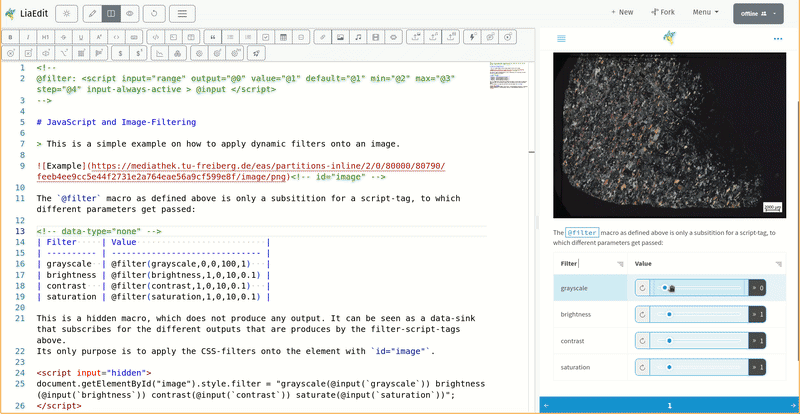
JavaScript and Image-Filtering
- André Dietrich
- Tutorial
- February 15, 2024
The following short example shows how script tags can be applyed to images in order to create a simple image-filtering effect. In LiaScript, the script tag is a reimagined version of a JavaScript-component that has a lifetime, can be combined with input-tags and has an output as well. Additionally, scripts can be stiched together by an execution graph, which is defined by the output of the script-tags. The script is executed in the browser and can be used to manipulate the image in real-time.
For more information of how to use script-tags, visit the documentation:
JavaScript or JS-Components